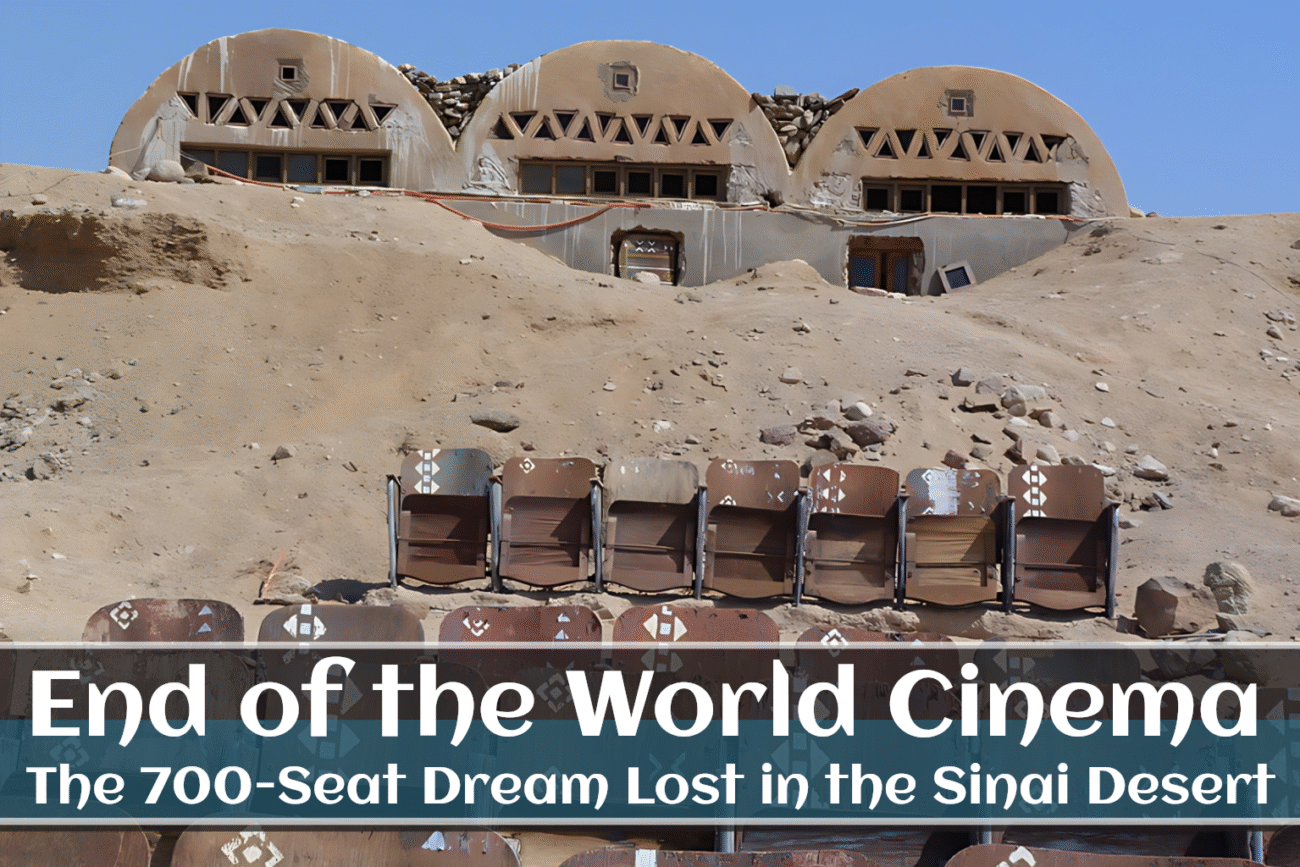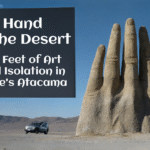In the vast, silent heart of Egypt’s Sinai Peninsula, far from the bustling resorts and turquoise waters, lies a monument to a beautiful, broken dream. Imagine rows of empty wooden chairs, 700 of them, staring at a giant, blank screen under the endless desert sky. This is the End of the World Cinema, a breathtakingly surreal sight and a story frozen in time. It was a place built for magic, but in a twist of fate, it never showed a single film. This is not just a pile of ruins; it’s a powerful story of ambition, failure, and unexpected beauty, making it one of the most fascinating and mysterious places in Egypt.
For travelers, photographers, and dreamers, the story of this unique Sinai desert cinema is a powerful tale. It feels like stepping onto the set of a post-apocalyptic movie, a place where a grand vision was born and died in a single night. Its journey from a hopeful beginning to a forgotten ruin, and finally to a viral internet sensation, is a captivating saga that continues to draw people to its legend. This is the complete story of the End of the World Cinema.
What Exactly Is the End of the World Cinema?
To truly understand this place, picture yourself leaving the lively city of Sharm el Sheikh. The paved roads quickly turn to dusty tracks, and the world opens up into an endless sea of sand and mountains. Then, suddenly, you see it. Seven hundred simple wooden seats, arranged in perfect, silent rows on a gentle slope. They look like they were placed there by giants and then simply forgotten. This is the physical form of the End of the World Cinema.
This incredible abandoned theater Egypt is proud yet puzzled to host consists of a few key elements that create its unforgettable atmosphere:
- The 700 Seats: This is the most striking feature. The wooden seats, brought all the way from an old cinema in Cairo, are now weathered and bleached by decades of harsh sun and sandstorms. They sit in the open air, perpetually waiting for an audience that never arrived. In the howling desert wind, they sometimes creak and groan, as if whispering stories of the premiere that never was.
- The Giant Screen: At the front stands a huge, concrete structure that was built to hold the movie screen. The screen itself is long gone, destroyed by time and the elements, leaving behind a giant, empty frame. Instead of a movie, it now perfectly frames the desolate beauty of the Sinai mountains behind it, creating a masterpiece of natural art.
- The Projection Booth: Tucked away at the back is a small, humble building. This is where the magic was supposed to happen. It was built to house the projector and, most importantly, the powerful generator needed to bring the cinema to life. Today, it stands as a silent reminder of the project’s fatal flaw.
This entire setup creates a bizarre and poignant picture. It’s a man-made dream dropped right into the middle of nature’s raw, overwhelming power. It’s no wonder it has become one of the most unique Sharm el Sheikh attractions for those seeking adventure over leisure.
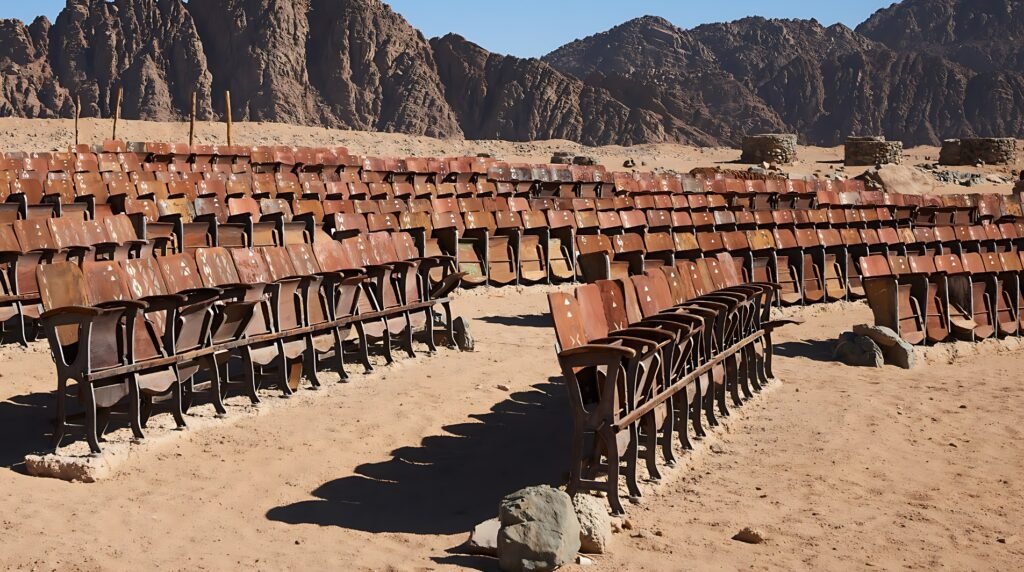
The Story of a Dream: The Man Behind the Cinema
Every strange place has a story, and the tale of this Sinai desert cinema is as captivating as any movie it might have shown. The story begins in the late 1990s with an eccentric and ambitious Frenchman named Diynn Eadel. Often described as a visionary artist, Eadel fell deeply in love with the Sinai desert during a trip. He saw its stark, empty beauty not as a void, but as the perfect canvas for a wild and wonderful idea.
He envisioned an open-air cinema where people could escape the noise of the city and enjoy a film under a brilliant blanket of desert stars. His goal was to create a profound experience, not just a movie night. He called his project “The Seventh Art Cinema,” a nod to the French term for filmmaking, showing his deep artistic intentions. Eadel wanted to prove that tourism and nature could exist in harmony, a beautiful idea that makes the cinema’s fate even more tragic. Atlas Obscura
Building an Impossible Dream in the Desert
Fueled by his vision, Eadel returned to Paris to find investors, then came back to Egypt to pour his heart, soul, and money into the project. The construction was a massive undertaking that showed his incredible determination.
- He found and purchased 700 wooden seats from a historic cinema in Cairo.
- He had them transported hundreds of miles into the remote desert.
- He hired workers to build the giant screen structure, described as being as big as a ship’s sail.
- He hauled a huge, powerful generator into the desert with a tractor to provide the electricity needed.
Everything was meticulously planned. He chose a location sheltered by mountains, creating a natural amphitheater. The seats were carefully arranged on the slope for a perfect view. Everything was finally ready for the grand opening.

Enjoy playing the Wordle game, where you can challenge your mind and language skills by trying to guess the hidden word within a limited number of attempts. Each guess provides you with clues about the correctness and position of the letters, adding excitement and suspense to every round.
The Night the Dream Died: A Premiere That Never Happened
Anticipation was high for the premiere night. Invitations were sent out, and dignitaries, including the governor of Sinai, were reportedly expected to attend. The chosen film was a blockbuster: Jurassic Park. The irony is almost too perfect—a film about a grand, ambitious park designed to showcase nature that ultimately ends in disaster. The cinematic roars of the T-Rex were meant to echo through the Sinai mountains.
But the desert, it seems, had other plans.
On that fateful night, as the sun went down and the eager audience waited, the generator—the very heart of the operation—sputtered, coughed, and died. A complete power cut plunged the site into darkness and silence. Without electricity, there could be no projector, no sound, and no movie.
The premiere was a disaster. The dream was over before it even began. For reasons that are still debated, Eadel never tried again. The cinema was abandoned that very night, left to the wind and the sand.
Whispers in the Wind: Why Did It Really Fail?
The exact cause of the generator failure remains one of the great mysterious places in Egypt lore. Was it just bad luck? Or was something else at play? Over the years, rumors have swirled, adding to the site’s mystique.
Many locals believe the generator was deliberately sabotaged. Some stories suggest that local authorities were not happy with a foreigner’s grand project in their desert and quietly put a stop to it. Other theories point to a rival businessman who wanted the project to fail. While no one knows for sure, the persistence of these rumors suggests a possible clash between Eadel’s visionary dream and local interests. The uncertainty only adds another layer to the legend of the End of the World Cinema.
The northern coast of Taiwan was once home to a striking architectural oddity: the Sanzhi UFO Houses futuristic, pod-shaped structures that resembled flying saucers. Originally envisioned as a luxury seaside resort, the project was abandoned due to financial difficulties, a series of mysterious accidents, and pervasive local superstitions.
From Forgotten Secret to Viral Sensation
For over a decade, the cinema remained a well-kept secret, a silent monument known only to a few local Bedouins and adventurous travelers. It existed completely off the grid, slowly decaying in the desert sun.
Then, in 2014, everything changed. An Estonian photographer named Kaupo Kikkas was on a tour when he stumbled upon the site. He was captivated by the haunting sight of the empty chairs and desolate screen against the dramatic desert landscape. His stunning photographs were posted online and almost instantly went viral.
The internet sparked a global fascination with the End of the World Cinema. Suddenly, this forgotten abandoned theater Egypt had hidden for years was famous. It started appearing on Google Maps, and a wave of urban explorers, photographers, and curious tourists began seeking it out. This digital rediscovery gave the cinema a second life, but it also sealed its doom.
The Double-Edged Sword of Fame
While the viral photos rescued the cinema from being completely forgotten, they also exposed it to the world. Only a few months after Kikkas’s photos became famous, visitors arriving at the site found a heartbreaking scene of destruction.
The once-neat rows of 700 seats were shattered and leveled. The metal fittings that held them together had been stolen, likely sold for scrap metal. The giant screen structure had also crumbled and collapsed. The very fame that brought it recognition had led directly to its physical demise. The secret was out, and it had been destroyed by its own popularity. In 2018, authorities officially closed the area to tourists, cementing its status as a ruin.
Visiting the End of the World Cinema Today: What You Need to Know
Today, the End of the World Cinema is a ruin of its former self. While officially closed, it remains one of the most sought-after alternative Sharm el Sheikh attractions for determined adventurers. If you plan to seek it out, it’s an adventure that requires preparation.
How to Get There
The cinema is located far off the main road, deep in the desert.
- You Need a 4×4: A regular car will not make it through the sand and rocky terrain. You must have a jeep or another all-terrain vehicle.
- Hire a Local Guide: The best and safest way to visit is with a local Bedouin guide. They know the unmarked desert trails and can share local stories about the Sinai desert cinema. They ensure you get there and back safely.
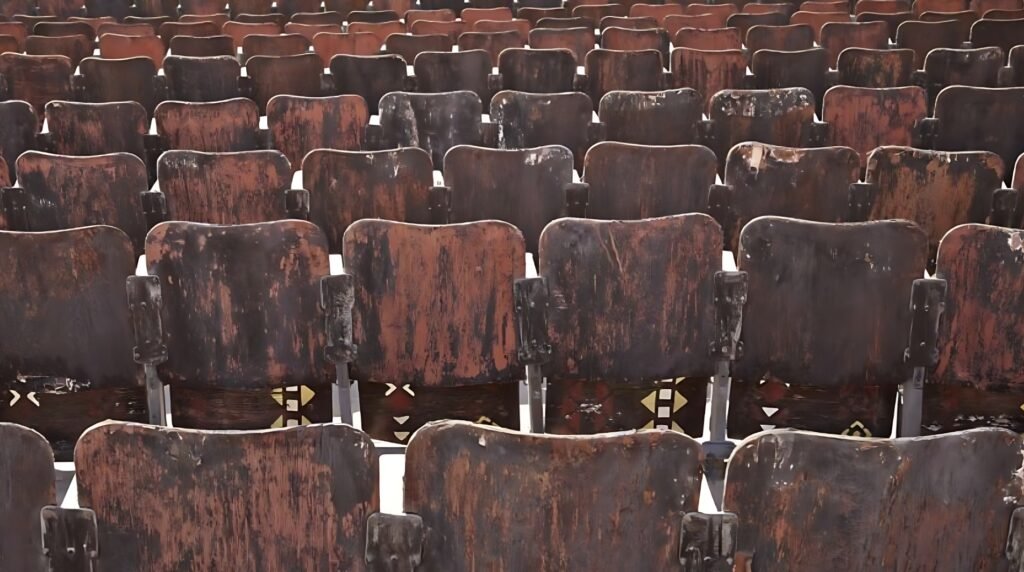
What to Expect and How to Be Respectful
Arriving at the site is a powerful experience. The first thing that hits you is the profound silence. As you walk among the broken, sun-bleached seats, you can almost feel the ghosts of the audience that never was. It’s a photographer’s dream, especially at sunrise or sunset when the light casts long, dramatic shadows.
Remember, this is a historic, albeit modern, ruin.
- Be Respectful: Treat the place with care. Don’t climb on the fragile, crumbling structures or leave any trash. The golden rule is “take only pictures, leave only footprints.”
- Be Prepared: The desert is an extreme environment. Bring plenty of water, sunscreen, a hat, and sturdy shoes. There are no facilities of any kind.
The Enduring Legend: Why We Are Still Fascinated
Why does the story of this failed cinema resonate so deeply with people? It’s because it’s a universal story. We all have big dreams, and we all know the fear and pain of failure. The End of the World Cinema is a physical symbol of that feeling—a monument to unfulfilled potential.
Its legend grew on the internet, turning it into one of the most famous mysterious places in Egypt, but with a modern, more personal story than the ancient pyramids. Even Diynn Eadel, the creator, eventually commented on its fame and destruction. In a statement, he expressed pride not in success, but in the act of dreaming itself. He said, “I DID MY DREAM… A most amazing dream We Dared to dream and dared to stand out.” For him, the effort was the triumph.
This iconic abandoned theater Egypt holds is a powerful symbol. It represents the clash between human ambition and the forces of nature, the bittersweet beauty found in decay, and the strange power of the internet to both create and destroy.
A Story Written in Sand and Silence
The End of the World Cinema stands today as a silent storyteller. It never got to share the magic of Hollywood, but it created its own powerful magic instead. It’s a testament to the idea that even in failure, there can be incredible beauty and a story worth telling. It reminds us that some of the most powerful narratives are the ones that were never finished.
So, if you ever find yourself in Sinai, consider taking a detour. Go and find this lonely theater. Stand among its broken seats, look out at the vast, empty landscape, and listen to the story the desert has to tell. It’s a story of what might have been, a beautiful dream lost to the sands of time, and easily one of the most captivating places in all of Egypt.
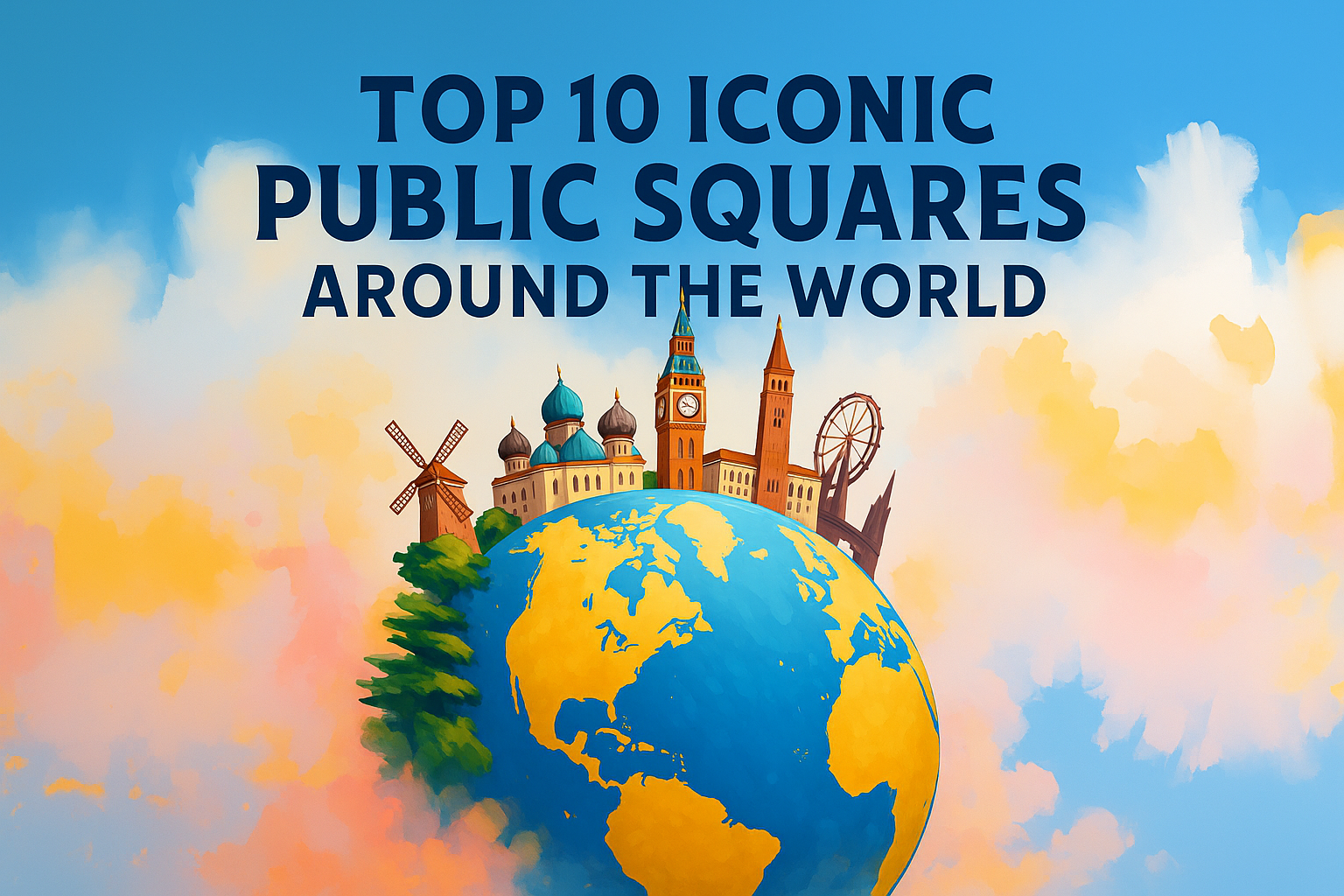
Discover the world’s most iconic public squares, where history, culture, and vibrant life come together. Explore breathtaking architecture and lively atmospheres in our top 12 picks. Dive into the heart of global cities visit now and experience these unforgettable urban gems!


